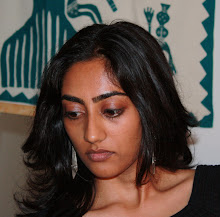International Shopping Festival

When I saw the posters for this event I was a bit apprehensive. I immediately thought that it must be an event of outright consumerism masquerading under a veil of promoting cultural diversity. Nonetheless, I was curious and set out on opening day to the Saba Saba grounds in the south side of Dar es Salaam, unchartered territory for me. I went with a friend by taxi after haggling with a few taxi drivers. Eventually we got the price down to a fair deal and we set off. Traffic wasn’t as bad as we were warned and we arrived to a relatively empty place. The grounds themselves are filled with various venues, like the Great Socialist People’s Libyan Arab Jamahiriya and other venues where what seemed like preparations for a wedding were taking place.
After we explored the ground a bit we paid our 1,000 shilling (.77 cents) entrance and entered a rather empty space. Stalls were up, but most of the vendors were still unloading their goods off the truck. We should have known that though the fair was officially to start at noon that day, it obviously would not be on schedule. There were a few vendors on top of their game and eager to sell their goods including socks, costume jewelry, honey combs (surprise surprise), make up, western shirts, Indian leather jutas (shoes) and a very funny vendor selling vegetable slicers with a full on demonstration on how to slice carrots, potatoes, and tomatoes (I hope for the sake of the hungry they actually use the veggies after slicing them and not just throw them out). We stopped at a vendor from Pakistan selling Kashmiri scarves, bed covers and wall hangings. It was such a nice feeling being in that stall. A cultural difference I’ve noticed here versus India is that when you go shopping here, the sellers don’t show you anything. For instance, when I went to buy my kanga (traditional fabric) I was behind the counter facing the seller and hundreds of kangas piled up, but she didn’t show me any without my having to ask. I had to point to ones in the pile and hope that it would be the one I wanted. Now India is the other extreme where the minute you look at something, the seller never leaves you alone and shows you all they have, so you never have to ask to see something. However, often times you have to tell them what you’re looking for, style, color, etc otherwise they show you want they want to sell, usually the most expensive things. Now both have their pluses and minuses. In India I would get annoyed with the constant in my face approach to selling, but here I get annoyed with the lack of help. So when we went to this vendor, it was great to see a bit of the Indian (and I assume this is a trait of most of South Asia) way of selling. After seeing many fabrics and much bargaining, my friend ended up buying a scarf from him.
 A bit of South Asia in Dar
A bit of South Asia in DarWe then moved on to another vendor that was up and running, an Iranian jewelry sells man. Ahmed, the kind young man from Iran, helped us buy the earrings below. At first I didn’t like the eyeball looking beads, but then it started to grow on me. It was interesting to see a couple of African men in suits buying rings with giant stones and I couldn’t help but wonder if they were planning on re-selling them. They didn’t spend much time picking and trying different rings the way someone would if they were buying it for themselves. Who knows maybe I’ll see the rings again somewhere in Dar.
 Ahmed
Ahmed


Honeycomb



Great! Look at you making waves in the blogging world.
ReplyDelete